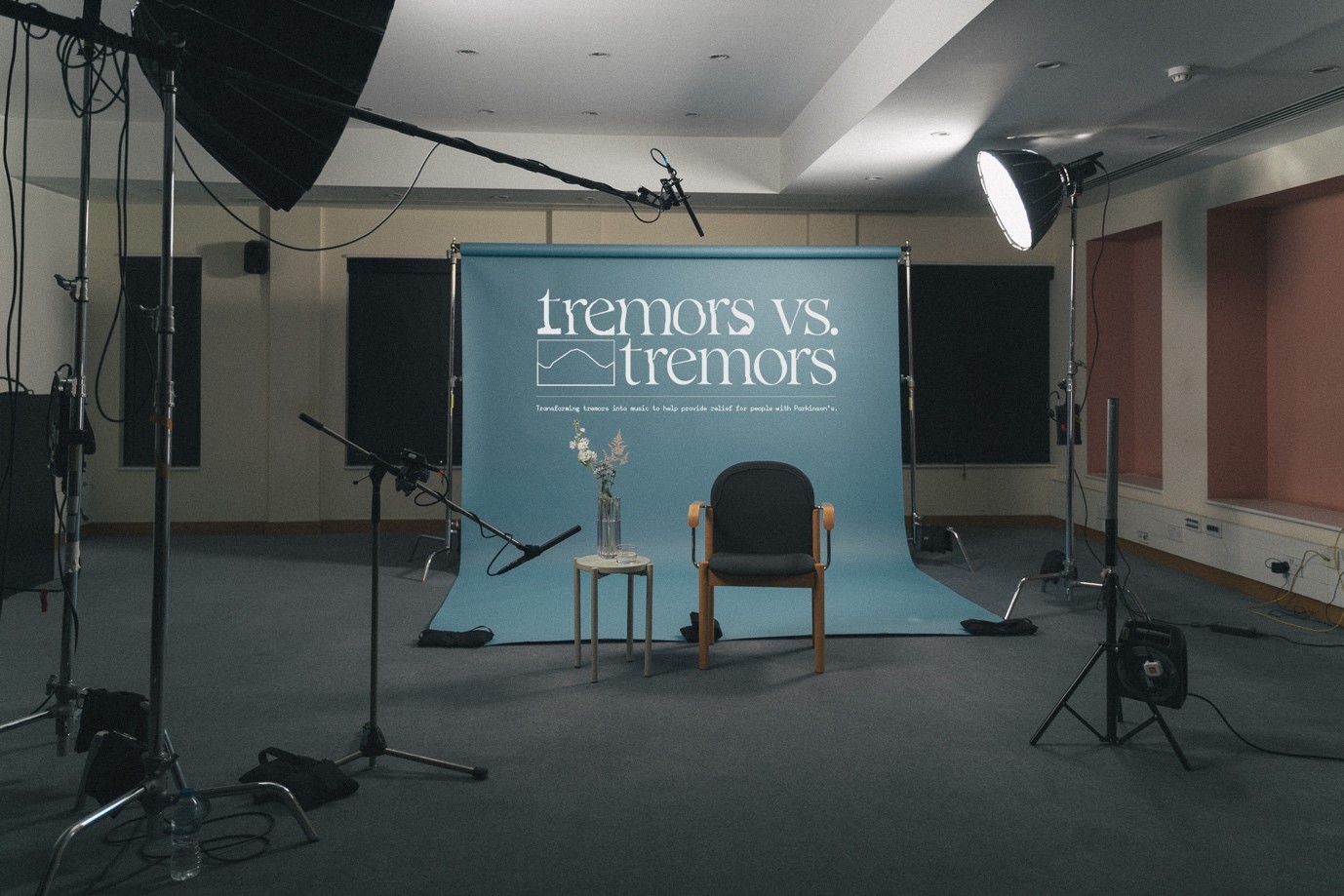Our Process
Developing the project:
People with Parkinson’s were involved at every stage of this project, from development to delivery. After the teams at UCL and Innocean Worldwide Europe (IWE) Berlin (IWE) created a preliminary outline for the project, six representatives from the Parkinson’s community were invited to a join them in an online focus group. During this session, the representatives provided input on the initial project proposal, highlighting any concerns, questions or things they would like to change. They directly influenced the project structure early on, to help to make it more relevant and impactful to the broader community, and their valuable feedback was incorporated into many aspects of the final project.
Project Delivery:
The project consisted of three phases:
- The first phase involved recruiting five people living with Parkinson’s and tremor, and inviting them to come to the Department of Imaging Neuroscience at UCL. Here, they had their tremors recorded by Dr Christian Lambert (lead Researcher on the project), during a standard assessment, using wearable devices on their wrists and ankles called accelerometers. They also discussed their experience of living with Parkinson’s and tremor, their relationship with music, and the musical genres they most enjoyed. The first phase was filmed by a production team from (IWE) Berlin. The insights captured form part of a short film for the project’s public awareness campaign, which aims to promote a better understanding of Parkinson’s, including symptoms like tremor, and address common misconceptions about the condition.
- Audio production specialists at DaHouse then used this data to compose musical tracks for each volunteer. Participants’ tremor recordings were directly embedded within their songs’ core, forming the foundation for each unique piece. Their musical preferences, personal narratives and insights of a life lived with Parkinson’s were also used to create a singular composition, that reflected them as individuals and embodied both the visible and invisible aspects of their condition.
- The participants were then invited back to UCL for a second filming session. During this session, they listened to their tracks for the first time, providing feedback about the pieces, project and creative journey, and reflected about how their music track makes them feel. Some participants were also filmed at different locations, doing hobbies that they enjoy.
Photo Credit: José Filipe Gomes, Innocean Worldwide Europe (IWE), Berlin.
Outputs
- The unique music tracks and short film were released publicly in March 2024 via a bespoke website. Through the use of music and video, this project hopes to demonstrate alternative and creative methods that raise awareness of Parkinson’s and support effective communication of the unique lived experience of Parkinson’s and tremor to the wider public. Royalties from these tracks will be donated to Parkinson’s UK, to help fund work to help more individuals living with this condition. The project has gained national news coverage including on BBC Radio 4’s Today programme and the ITV 10 o’clock news.
- Tremor, alongside other symptoms of Parkinson’s, can have a unique pattern in each person, and doesn’t always respond to the standard medical therapies. The day-to-day severity of tremor can also be influenced by many other factors, including stress, anxiety, general health, exercise, external perceptions, expectations and other issues. These factors provide a range of potential and alternative routes which do not rely on medicines, that may help to improve tremor.







